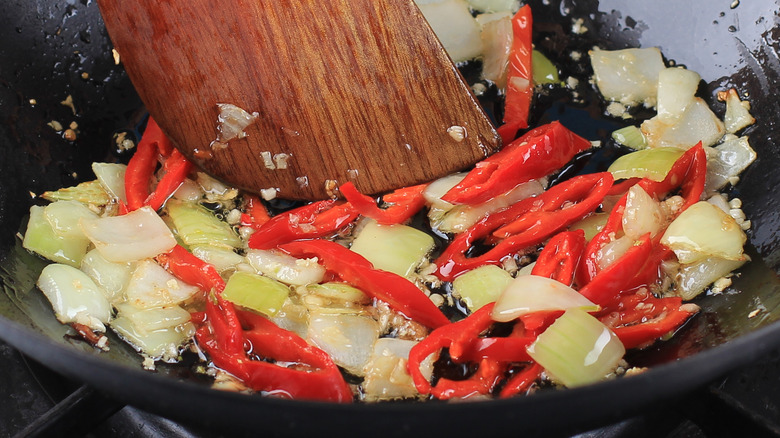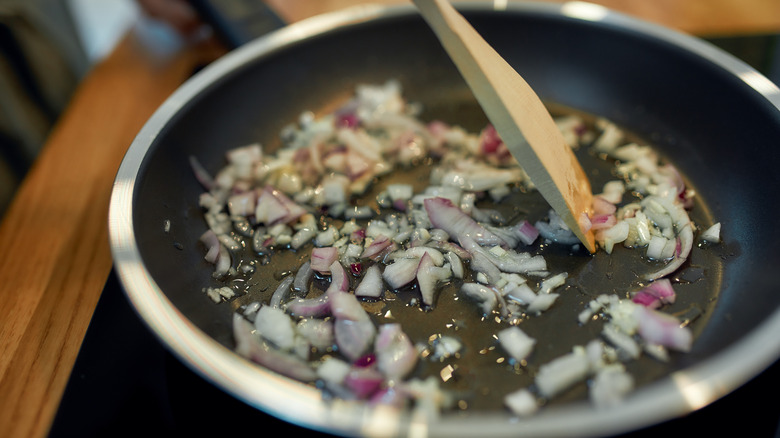What To Look For When Choosing A Pan For Sautéing
The word sauté means "jumping" in French, according to Le Creuset. When sautéing, foods are cooked over medium to high heat, while the food is flipped and stirred often, which makes its namesake appropriate.
Whether you're sautéing onions to soften them for a soup or whipping up a quick stir fry of meat and veggies, this cooking method is required frequently in the kitchen. Just as with many methods of cooking, using the right ingredients and tools makes all the difference.
There are a couple of things that can't be overlooked when sautéing. One of those things is oil. There are plenty of cooking oils to choose from when sautéing and it's essential to make sure you use enough, no matter which one you use. Too little will cause the food to brown unevenly, so make sure to coat the bottom of the pan. Also, remember to cut your meats and veggies into uniform pieces, so they cook evenly and finish at the same time.
The next thing you need, which is the base of all of your sautéing, is the right pan. Even with the finest ingredients and the best oil, sautéing will be frustrating without a pan designed to handle this cooking method.
Prioritize the shape and material
Your sauté pan should have a flat, wide base, according to Made-in Cookware. This allows plenty of room for even cooking. Two common materials you'll see sauté pans in are stainless-clad and non-stick. Stainless steel stands the test of time and can handle anything you throw at it, including high oven temperatures.
Non-stick, however, is superb when it comes to cleaning up and giving you the ability to use less fat to keep food from sticking. Choose the material that suits your style of cooking best, and make sure the pan's size and shape are designed for sautéing.
Bed Bath & Beyond writes that high sides are important to prevent oil and sauces from splattering. Also, look for a sauté pan with useful handles. The long handle should be comfortable to hold as you stir around your sautéing food. Sometimes there is a second small handle on the other side of the pan, which is convenient when you need to dump food out of the pan.
Before making any decision, understand your cooktop. A flat cooktop requires a sauté pan with a sturdy, thick metal bottom so it sits still. A gas cooktop is better suited for a clad design. As mentioned, stainless clad is high-quality stainless steel because there are several layers of metal, which allows for better heat distribution. Take the time to choose the right pan and sautéing will be quick and efficient.

